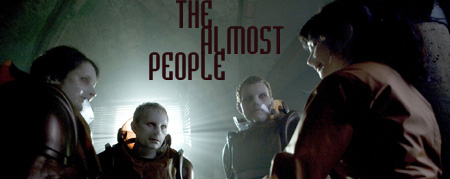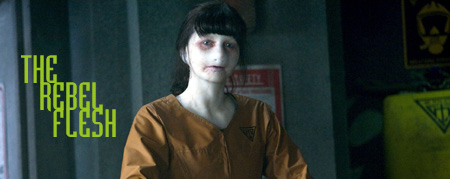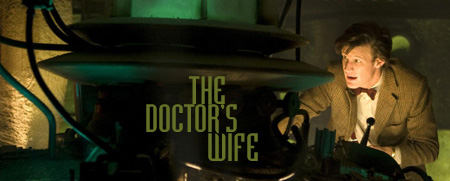Ooze Company
Thursday, June 30th, 2011 In the half-time score for Who’s 2011 season it would appear that it’s Matthew Graham’s Ganger show which has taken the greatest kicking.
In the half-time score for Who’s 2011 season it would appear that it’s Matthew Graham’s Ganger show which has taken the greatest kicking.
Traditional, slow-paced, under-plotted for two parts – The Rebel Flesh/Almost People shares many criticisms with Chris Chibnall’s Silurian episodes of last year, which also featured an arc-building coda involving a disappearing companion. The difference this year is broader though. A split in the season means that Graham’s script has been cast into sharper focus for its perceived failings. As a two-parter alongside the similarly less-loved Curse of the Black Spot we could have a three-to four split of ‘not-good’ versus ‘good’ in the 2011 series so far – not great odds. Additionally, as the remaining stories comprise themselves of another two parter, the mid-season finale and Neil Gaiman’s widely-lauded effort you can see the problem – this year if it’s not The Doctor’s Wife it’s either arc-building, in two parts, or just routine. And personally, I think it’s the arc-building that’s the problem.
My thesis then is that The Almost People isn’t a bad story. There are poor parts, for sure – the most patientest cutest widdle child on a holophone line ever, an abrupt character change in Cleaves that allows for a really unconvincing Noble Sacrifice ™ at the end that just screams “too many castmembers!” and of course the unexpected return of the Lazarus Monster as überGanger Jennifer. It is in places a plod, and its shock last-minute twist stands out not for being the clever bit in the script, but for being the obious equaliser, the hand-up offered by the series showrunner. Why else should we expect a two-episode build up to this when there’s an effective (and equally open) ending behind the Company doors on the mainland. If you want to see how that board meeting might have turned out, stay tuned for A Good man Goes to War, and see the Ganger role in future wartime diplomacy.
In the course of two weeks we’ve had less of a standalone story and more of a distraction from the main event – Amy’s quantum pregnancy, and Eyepatch Lady; so I do feel for Graham’s lot. An ordinary story with some great makeup and good design, some smar casting (ho ho) and a living Rory (we should have known something was up!!) Even Matt Smith’s double act was good – not smug, a little bit tricky with the swapped shoes, and more knowing than at first you might have thought. But it’s not enough, and future DVD box sets will not treat this story as The Exciting One With Gangers, but The One Where The Doctor Melts Amy And The Main Plot Kicks Back In – and after two weeks that just doesn’t seem fair.
PA

 The main revelation of this rather bleak and confined episode is not that the previously servile, artificially-created duplicates: the ‘Gangers,’ have somehow gained independent thought, but that the equally puppeteered Rory Pond has. As I’m never slow to point out, he has never been my favourite character, but his devotion to ‘Jennifer’s (other) Body’ and emergent streak of wilfulness has suddenly made him a much more interesting character. It’s a far more meaningful manning-up than that ‘20-centuries Centurion’ business last year.
The main revelation of this rather bleak and confined episode is not that the previously servile, artificially-created duplicates: the ‘Gangers,’ have somehow gained independent thought, but that the equally puppeteered Rory Pond has. As I’m never slow to point out, he has never been my favourite character, but his devotion to ‘Jennifer’s (other) Body’ and emergent streak of wilfulness has suddenly made him a much more interesting character. It’s a far more meaningful manning-up than that ‘20-centuries Centurion’ business last year.

